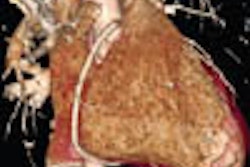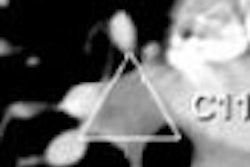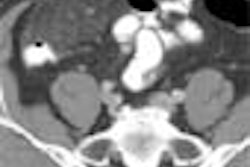MRI should replace CT as the first-line test for accurate diagnosis of suspected acute stroke, according to a study published today in the Lancet. The authors found that MRI was superior to CT for diagnosing ischemic stroke, as well as acute and chronic hemorrhage. While cost is an issue with MRI, its greater diagnostic accuracy would justify the extra expense, they said.
Dr. Julio Chalela and colleagues from several institutions in the U.S. and Canada conducted a single-site, prospective comparison of CT versus MRI from 2000 to 2002. Their study population consisted of 356 patients who underwent MR scans at least two hours before a CT scan.
Chalela is from the Medical University of South Carolina in Charleston. His co-authors are from various centers in Washington, DC; Boston; Bethesda, MD; and Alberta, Canada.
The median time from symptom onset to MRI was 367 minutes, while the same median time was 390 minutes for CT. MR scans were done on a 1.5-tesla scanner (Signa, GE Healthcare, Chalfont St. Giles, U.K.) using gradient-echo imaging and diffusion-weighted imaging (DWI) sequences.
Noncontrast CT images (Somatom Plus, Siemens Medical Solutions; LightSpeed, GE Healthcare) were acquired in the orbitomeatal plane with a 5-mm slice thickness. All images were randomly sorted by pairs (one CT, one MRI) and analyzed by two neuroradiologists and two stroke specialists.
According to the results, MR detected acute stroke in 52% (185 of 356) of the patients versus 17% (59 of 356) for CT. The four readers reached a unanimous agreement as to the presence or absence of acute stroke in 80% of the MRI cases and 58% of the CT cases. MRI's sensitivity in acute stroke was 83% and its specificity was 97% versus 26% sensitivity and 98% specificity for CT. For the final diagnosis of acute stroke, MRI had an accuracy of 89%, while CT's accuracy was 54%.
In 131 patients scanned between three and 12 hours after symptom onset, MRI detected ischemic stroke in 41% (53 of 131) of the cases, compared with 12% (16 of 131) for CT. The modalities turned in similar results for acute intracranial hemorrhage (6% of the cases with MR and 7% for CT).
Finally, MRI had a false-negative rate of 17% -- most likely due to small lesions in the brain stem -- but no false-negative cases on MRI were positive on CT, the authors reported.
"The greater overall sensitivity of MRI for acute stroke in this study is attributable to its effectiveness for detection of acute ischemic stroke," the authors wrote. "Our sample was representative of the range of patients who are likely to present with clinical suspicion of acute stroke…. Therefore, our results are directly applicable to clinical practice" (Lancet, January 27, 2007).
They concluded that the use of CT was no longer justifiable on the basis of diagnostic accuracy alone. Of course, CT is a cheaper, faster exam, but the group argued that "since immediate MRI allows more accurate diagnosis than immediate CT, it might increase the cost-effectiveness of stroke care, since definitive treatments and secondary prevention could be initiated sooner than with CT alone."
By Shalmali Pal
AuntMinnie.com staff writer
January 26, 2007
Related Reading
Ultrasound shows vessel patency after TPA for stroke, predicts outcome, January 17, 2007
MRI-detected lesions may predict recurrent stroke, December 12, 2006
Radiation dose can add up in CT stroke imaging, December 1, 2006
MRI profiles predict utility of reperfusion therapy for stroke, November 22, 2006
MRI helps identify ischemic stroke patients likely to benefit from tPA, May 8, 2006
Copyright © 2007 AuntMinnie.com



















